
|
 |

|
 |
|
The dynamic new gen Bharatanatyam teachers of Chennai - Part II - Lalitha Venkat e-mail: lalvenkat@yahoo.com Photos courtesy the artistes November 8, 2017 (This article was commissioned for the 2016-2017 issue of Attendance - edited by Ashish Mohan Khokar - that had focus on Guru-Shishya Parampara. Reproduced here with permission.) Many established dancers in Chennai are quietly doing their bit to impart the aesthetics of dance to the current generation as well as the employed who attend late evening dance classes to unwind from their work stress. Some of these dynamic teachers share their experiences about their own training, what they imbibed from their gurus and how they are passing on their knowledge to the present generation while also adapting to the current scenario. The dynamic new gen Bharatanatyam teachers of Chennai - Part I REVATHI RAMACHANDRAN 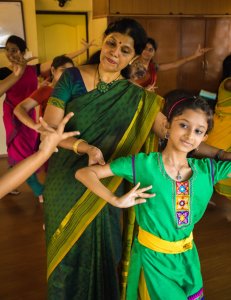 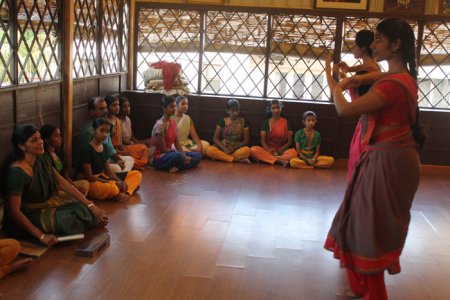 Born in 1900, my guru Mangudi Dorairaja Iyer established the Melattur style of Bharatanatyam. There were many facets to my guru - a scholar of music who composed many dance compositions, an exponent of mridangam and Bharatanatyam whose books on these subjects bear eloquent testimony to his erudition, a disciplinary teacher who resurrected Suddha Nrittam, Bhattasa Natyam and Perani Natyam and a sanyasi who mastered the Srividya Upasana. My guru passed away in 1980. I was shattered and went to Dr. Padma Subrahmanyam, requesting her to take me as her student. She told me that the legacy of the Melattur style had to be preserved and the parampara had to continue. So, I took lessons from Kanchana Sharma, a disciple of Mangudi Dorairaja Iyer and started choreographing dance to small songs. Mridangist A.P. Haridoss guided me for composing and choreographing jathi patterns. My exposure to dance theory and allied subjects was embellished with attending two residential camps on Natya Shastra by Dr. Padma Subrahmanyam, nattuvangam training under Bhagavatulu Sitarama Sharma, veena lessons from Kalpakam Swaminathan and Kuchipudi under Dr. Vempati Chinna Satyam. My training in these various aspects helped me assimilate the philosophy that dance is not a simple physical exercise but a science which had to be thoroughly experienced and expressed. My study of Vedanta under Swami Dayananda Saraswathi and Swami Paramarthananda gave me a vision which changed my purpose of dance from being mere entertainment to making it a moksha sadhana, enlightening the performer and the perceiver. My institute Kala Sadhanalaya established in 1987, imparts training in Melattur style of Bharatanatyam, nattuvangam, abhinayam, theory of dance and also incorporates an intensive study of the cultural heritage of India. The emphasis for students is to integrate art, culture and philosophy into their life to give valuable insight to their way of living and make them better individuals with value systems that help them transcend the mundane activities of life. Our productions are an amalgamation of contemporary thoughts and traditional training. We have 6 staff and about 60 students presently undergoing training at different levels. Six financially weak students receive free lessons and are also given opportunities to perform. Students trained in the institution are now teaching and performing in various parts of the globe. PRIYA MURLE 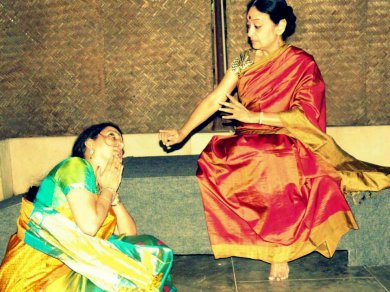 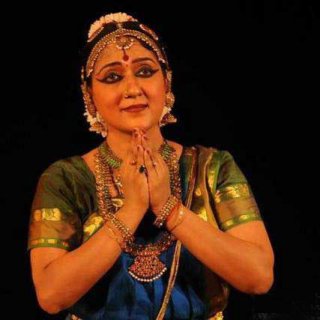 Priya Murle with Prof. Sudharani Raghupathy Though I started learning natyam from the age of 5, I came to Shree Bharatalaya under the tutelage of my Guru Prof. Sudharani Raghupathy when I was 6 1/2 years old. As a child I used to be very quiet (unbelievable, is it not?) and very reticent too. Music and dance was very much part of our house and hence dance classes were taken seriously and there was an innate discipline to be on time, not to miss classes. Sudha Aunty was always well dressed and beautiful, with big beautiful eyes that were drawn well. When she came to class, she would be there five minutes before the assigned time, and we had to be there before that, in our practice saris, with pottus, kajal in our eyes, smelling well and alert. The learning that happened under our guru was something amazing. We learnt music, Sanskrit and we had a master who would tell us mythological stories. When I waited for my dad to pick me up, Aunty used to give bound volumes of Amar Chitra Katha to devour. We all respect Aunty but the atmosphere was that of home away from home. We used to share our secrets (I do), our aspirations with her. Sudha Aunty also laid emphasis on education and would excuse us from class during exam times. So learning there was holistic. We had master classes of other artistes and legends visiting her. That Vidwan Madurai N Krishnan was the Director trustee of the institution was another absolute blessing. So music composing, choreography, spiritual discussions, food binging would all happen as if it's the way of life. Learning was fun; it was a modern day Gurukul for us. I realize now the kind of exposure, learning that we had. As a teacher, now consciously and unconsciously I want the same kind of learning for my students. But there are many constraints -- time, academic pressures. But the scenario is definitely not the way it used to be. Children have to be handled with kid gloves. But having said that, I love to teach and spend time with my students. SREKALA BHARATH 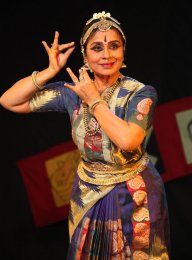 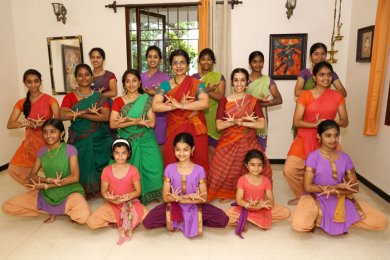 The inimitable Guru K.J. Sarasa is someone who dedicated her life to Bharatanatyam, believed in the purity of the art form and encouraged her shishyas to find their own path. I imbibed many of her artistic qualities while training under her and made it a point to integrate them with my own aesthetic vision. My students range from the age group of 4 to 30 years having different take on art. Some show great keenness to make it their life calling while some others seem to be learning as a way to appreciate good art. As a performer, choreographer and teacher, I am trying to blend the best of tradition with modern sensibilities. I want my students to understand the essence of art form in contemporary context whether teaching them face to face or through Skype. I insist that they perceive the art on their own terms, of course, under the guidance of their teacher and by watching many senior performers who have brought in so much meaning to the art. For me Guru Shishya Parampara is about give and take that adds depth to our presentation and journey in general. I am a teacher who believes in exchange of ideas, freedom to think and the courage to be creative. That is Guru Shishya Parampara in the 21st century. K. SHANMUGHA SUNDARAM 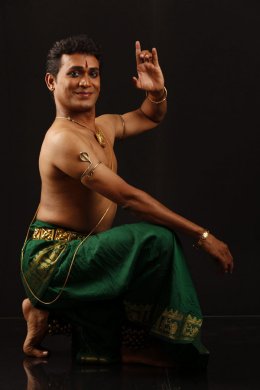 I am from Namakkal, a village in Tamil Nadu, and while growing up I did not have much exposure to classical dance. But I always had an interest and a deep passion and longing to learn dance. This passion brought me to Chennai, where after a long search I finally found my teacher, K.J. Sarasa. I had no basic training in the adavus and the first classes were difficult. I particularly remember my very first class with my teacher. I was in the center of the dance hall and teacher asked me to sit (araimandi). I immediately sat on the floor, legs crossed! All the other students started laughing. This is how I started dance. From this first class came years of gurukulavasam learning of Bharatanatyam. Sarasa teacher always encouraged her students to do their absolute best, and treated all her students equally. She loved teaching. Although she was a very strict teacher, at the same time she gave her students a lot of freedom. She had high expectations of her students and often expected them to grasp nuances themselves. A large part of learning with Sarasa teacher was performing on stage. She felt just dance classes were not enough, and that much of the learning of dance performance and presentation, happens on a theater stage. She not only taught me dance, but also nattuvangam, and especially how to teach dance. She taught me how to look at each student as an individual, and teach students according to their capabilities. She also encouraged me to join her for nattuvangam during performances of other disciples, and it is during these many programs I learned how to be a good teacher. I've spent a lot of time with my teacher, we travelled to many places for performances, and she shared much of her thoughts about dance with me. Now that she is gone I realize even more how precious those times were. Today I teach my own students with the same passion as my teacher did. I try to instill in my students, who come from all walks of life and different countries, that Bharatanatyam is not mere physical activity, but is a way of life, one that never ends! SWARNAMALYA GANESH 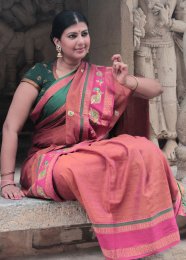 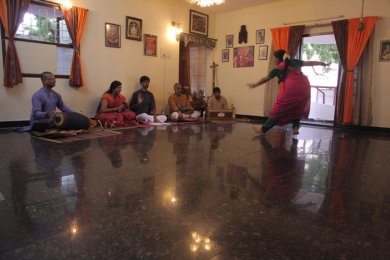 To Madras, she was a new age Bharatanatyam guru who had a stamp of approval from the turnpikes of tradition (Vazhuvoor). In her own words, "My Guru had blessed me to become a nattuvanar and dance teacher. What I lacked in glamour and star value that the likes of Baby Kamala and others had, I had in lilting voice, strong layagyana and dynamism." Thus the daughter of Karaikal Jagadeesan Pillai became Guru K.J. Sarasa. She would speak the urban language (Tamil) that reflected her "modern" adaptations. She learnt to sign her name in English with great pride. Open to choreographing for new age compositions and making way for any au-courant trends in Bharatanatyam, she was an accepted traditional practitioner, cut and sewn successfully into the fabric of modernist Madras. She didn't rebel or resist change. I became very aware of this in the later years of my training under her and other amazing Devadasi women too. Not only did they go with the flow but also were in some ways a forefront example of how such an operation could be done. Sarasama so successfully turned the tables of gender, race and ancestry, the same evils that buried several of her sisters (from the fraternity). She was hailed as a "Nattuvanar," one of the first females to wield the cymbals for dance in a very strong male domain of Nattuvanar parampara. I think therefore, I as a teacher am fully aware of an insider/outsider identity that I have. I teach my students the lives, practices and even queer tendencies, including the humour I have witnessed and imbibed, along with rigorous practice from custodians. A large part of my teaching is from my individual experience as a performer, combining my other skills such as music, academic training in history, archaeology and gender studies, but I think within the ethos of what my gurus taught me. Today's generation of students have a lot of questions. They appreciate reasoning. Most of my students are passionate about other fields of knowledge apart from dance. We constantly invoke these as cross-pollinated theories through practice, even within traditional repertoire. Primarily my Ranga Mandira Academy of World Dance / Performance and Indic Studies has evolved into a place where there is camaraderie between the gurus and shishyas without blurring the lines between experiential wisdom and learner's curiosity. Most importantly I see myself along with my colleagues at our Academy as a guru, grooming empathetic artistes. To us, being socially sensitive and willing to pause and take along others with you, are dearer qualities. Practice of Carnatic music and Bharatanatyam hence, are deeply seated in this socio-cultural reparation. G. NARENDRA 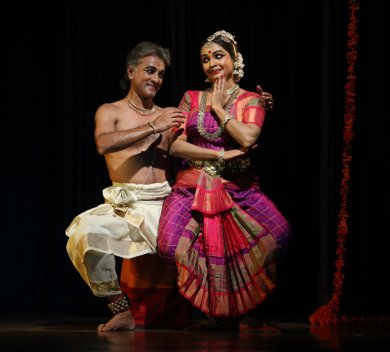 G. Narendra & Deepa Narendra I started learning dance when I was very young, and from then on all I wanted was to be a dancer. From Mysore to Kalakshetra, it has been a long journey. I still believe I am a student of dance and the learning continues. As a teacher I would love to selflessly impart the knowledge I have acquired over the years, not look at social status and be partial in what I teach. I believe in teaching what every individual student is capable of depending on their dedication and talent. I prefer them to be my shishyas rather than just students. We teach a range of kids from age 5 onwards. We have students who are working professionals as well. These days there is no Guru, Shishya or Parampara. There is only a teacher-student relationship. A guru is different from a teacher. The reason I say this is, these days any dancer who learns dance for two to four years becomes a teacher and calls herself/himself a 'Guru'. A guru is someone on par with god and should have the stature of a parent. Hence the sloka "Guru Brahma Guru Vishnu Guru devo Maheshwaraha…" Now keeping all this in mind I would like to know how many real gurus we have. Likewise, a shishya is different from a student. A real shishya has to believe that he or she knows 'nothing' while seeking a guru, has to shed all egos and surrender completely to the guru in pursuit of learning. A teacher requires obedience and discipline from the pupil, a guru requires trust and humility from the shishya. Assuming parampara is tradition, when you don't have real gurus and real shishyas, where is the parampara? In my humble opinion, these titles - Guru Shishya Parampara, Baanis etc. - are overrated and very loosely used. In fact, it has no relevance in 2017. These days, students start learning from one teacher, if not satisfied they move on to another and so on. This is based on individual requirements. Not to forget, these days there is always a price tag on everything. The teacher-student relationship itself is based on social status. In all this, learning the art has become incidental. One can always find a teacher but a guru has to find and accept you. SHIJITH NAMBIAR & PARVATHY MENON 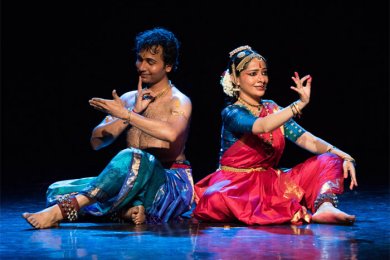 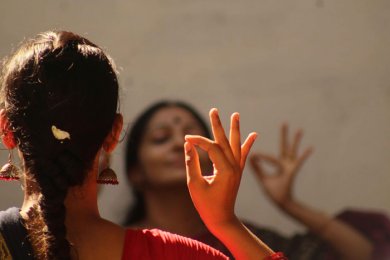 We are both post graduates of Kalakshetra. The 6 years of our student life consisted of full focus in every aspect of becoming a true artist. It wasn't just a place to learn natyam, but a home where we were nurtured and nourished to bring out the best when we leave to being ambassadors of Indian art and culture. Staying within the campus we were fortunate to have our education in a gurukulam sort of an environment. Currently we train young children, adults who want to learn Bharatanatyam for the love of it and others who are dedicated in becoming performing artistes. In the present scenario of where youngsters want to gain everything quickly, it is a challenge to teach them certain values. We believe that the relationship between a guru and shishya is forever. Bonding is essential for the passing on of a parampara. The shishya must be obedient and devoted to not only the guru but to the lineage that is being passed on. LAKSHMI RAMASWAMY 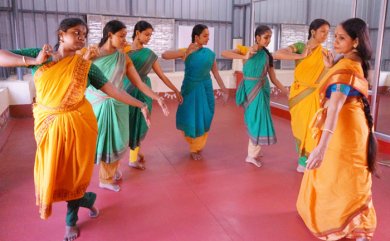  I have been blessed by selfless gurus: Chitra Visweswaran, Dr. Padma Subrahmanyam and Kalanidhi Narayanan. All of them not only taught the technique, they also guided me to delve into the aesthetics, nuances, grammar, approach-to and depth-of natya. Chitra Visweswaran would insist on being a 'thinking' dancer and direct us to not only look at the lyrics but also read in between lines. I have also been inspired by dancers who have not been my teachers directly: Guru Kelucharan Mohapatra, Swapnasundari, Anita Ratnam and Leela Samson. It is not only dance gurus who have opened my eyes - Tamil literature classes from Dr. S. Raghuraman, music composition of Dr. Rajkumar Bharathi, recording sessions with Sai Shravanam, poetry discussions by Nandini Ramani, lectures and articles on temples conducted by Dr. Chitra Madhavan and Dr. Sankara Narayanan, sketches of painter Marudhu, Bapu, Rajam Iyer and Keshav - have contributed and developed my knowledge base. Like any other teacher, I have students who have been 'dead serious' or 'very casual'. What is unusual is that, all my students are first generation dancers. It has been a challenge to make many of them take it seriously rather than a part time hobby. Some have known, through time and experience, to do multi-tasking. They have also been successful teachers in their own right running their schools. It has been 23 years since I started teaching at Sri Mudhraalaya. My classes include theory, tala, nattuvangam, abhinaya, group work, projects, pencil work (sketches, stick diagrams), prayer shlokams, stage lighting and props, makeup, stage management, compering and teachers' training. I also have virtual class rooms in Skype, where my students continue to upgrade their learning from me while being far away. I teach my students personally, whereby I get to understand their available skills and the necessary learning to make them better dancers. All my experienced students dance knowing their advantages and drawbacks and look different when they present their solos. They also learn to come together with a synched mindset to do group performances. I would, at anytime subscribe to the Guru Shishya Parampara method. But the drawback is to identify the proper guru. A good system of knowledge transfer heavily lies on whom to teach - what to teach - where to teach - how to teach and how much and when to teach. Students who get such gurus can gather the best knowledge not only for their skill but also for their life! PARVATHI RAVI GHANTASALA 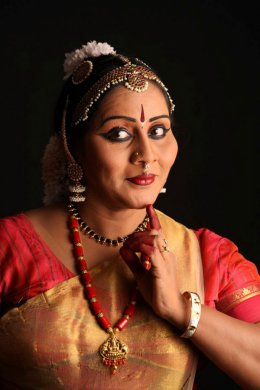 During our times, the environment was very different. The relationship between guru and shishya was more like between mother and child. My Guru Krishnakumari Narendran helped me appreciate the spiritual treasures our culture offers. I learnt the art of choreography by being by her side during her productions. I took advanced training for abhinaya from Kalanidhi Narayanan and for nattuvangam from Bhagavatulu Sitarama Sharma. I believe in hard work, determination, resilience and complete surrender to the art form. I encourage my students to become teachers. I believe that this is the way the art can be passed on to generations, like how our great gurus passed on their knowledge and experience to us. I loved learning directly and practicing several times under my gurus. I attended performances of other dancers and educated myself on the different styles and emotions. Nowadays students have time constraint. They need to balance their education/job/family life. They are all involved in many activities around them. I personally handle my classes. Teaching young kids is different from the older kids. You need to be strict at times and also motivate them in a friendly manner. The students are really brilliant and we need to tap their talents. Discipline, determination and dedication is our mantra, while incorporating respect and humility. I ensure that there is rigorous practice, as practice and continuous learning is the only key to success. I'm glad that I'm able to provide opportunities to my students through my dance dramas. Through my Kala Pradarshini Centre for Performing Arts and cultural activities, I conduct annual natya festival showcasing the potential of talented youngsters as well as a galaxy of eminent artists for the past several years. It has always been a joyous experience for me to provide platform to many young talents. Lalitha Venkat is the content editor of narthaki.com Post your comments Please provide your name and email id when you use the Anonymous profile in the blog to post a comment. All appropriate comments posted with name & email id in the blog will also be featured in the site. |